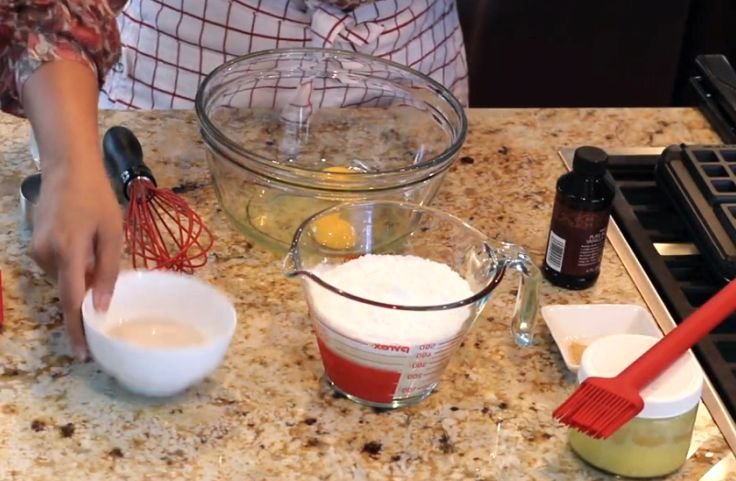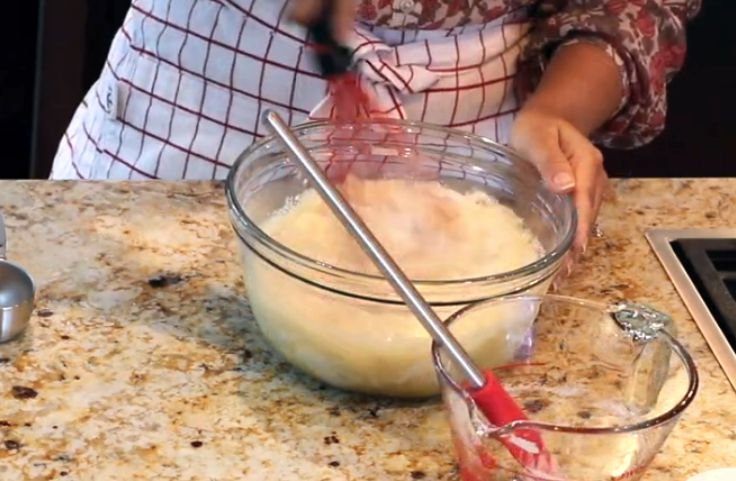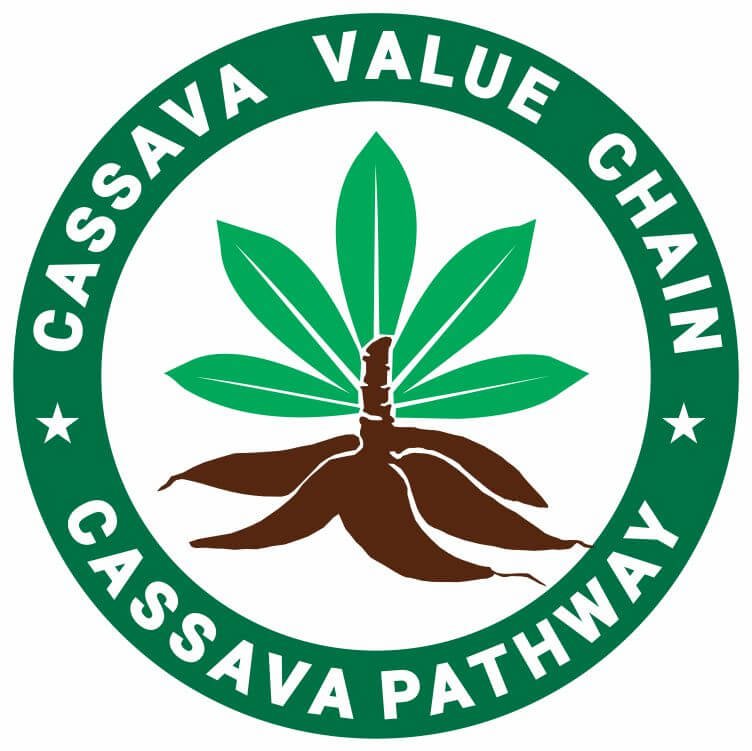Cassava flour waffles are easy to make, cook fast, and turn out light and crisp. Great for a quick breakfast with just a few pantry ingredients.
When you make waffles with flour from cassava, you get a texture that feels familiar yet lighter than traditional wheat.
You will notice a crisp edge and a soft center that holds up to syrup, fruit, or your favorite toppings.
If you avoid gluten, this flour lets you enjoy waffles without worry.
It is gentle on digestion and works well in diets like paleo, Whole30, or AIP.
You can rely on it for steady energy because it is rich in carbohydrates.
While it does not provide the same protein as wheat, it delivers a satisfying structure and taste.
Using cassava flour provides a simple and reliable way to enjoy breakfast that tastes good and is good for your body.
Recommended: Vegan Cassava Flour Waffles without Eggs
What Are Cassava Flour Waffles?
Cassava flour waffles, different from tapioca waffles, are waffles made using flour derived from the cassava plant’s root, instead of traditional wheat flour.
They have a light, slightly crisp exterior with a soft and tender inside, closely mimicking the texture of classic waffles.
Cassava flour is naturally gluten-free, and these waffles are suitable for people with gluten sensitivities or celiac disease and are easier to digest for many compared to wheat-based waffles.
Related: Easy Cassava Tortillas Recipe
Ingredients for Cassava Flour Waffles

To make waffles with cassava flour, you need the right ingredients for texture, taste, and structure.
Each component plays a role in creating fluffy, tender waffles you will enjoy.
Cassava Flour
Cassava flour is the foundation of your waffles. It comes from the cassava root and is naturally gluten-free.
Using it gives your waffles a light texture and a subtle nutty taste.
It works well with both sweet and savory toppings and keeps your waffles tender yet structured.
Eggs
Eggs hold your waffle batter together and give it moisture. They create a soft interior and slightly crisp edges.
If you avoid eggs, flaxseed meal or applesauce can be a substitute.
Either way, they help your waffles maintain shape and provide a satisfying, consistent texture with every bite.
Milk or Dairy-Free Alternatives
Milk hydrates the cassava flour and helps form a smooth batter. You can use regular milk or plant-based options like almond, oat, or coconut milk.
Each choice adds its flavor, so pick one that suits your taste while keeping your waffles tender and light.
Fat Source
Fat adds flavor and crispiness to waffles. Use vegetable oil or melted butter to create a golden, crunchy exterior while keeping the inside soft.
This small addition improves texture and mouthfeel, making each bite balanced and enjoyable without overpowering the natural flavor of cassava flour.
Leavening and Salt
Baking powder makes your waffles rise and become airy. A pinch of salt balances sweetness and enhances the overall flavor.
These small ingredients work together to make your waffles light, well-structured, and flavorful.
They ensure each waffle has the right texture and a pleasing taste.
Optional Sweeteners and Spices
Add honey, maple syrup, or coconut sugar if you like a hint of sweetness.
Cinnamon or vanilla extract can bring warmth and depth to your waffles.
These options let you adjust the flavor to your preference, making every bite satisfying and delicious.
Related Posts
Simple Way to Make Cassava Tortillas
Cassava Pancake Recipe Using Grated Cassava
How to Make Yuca Fries Dipping Sauce
Cassava Pie Guide: Recipes, Variations, and How to Make It at Home
How to Make Cassava Flour Waffles
Making cassava flour waffles is simple when you follow the right steps. With a little care, you can enjoy waffles that are crisp outside and tender inside.
Step 1: Gather Your Ingredients

Start by measuring 1 cup of cassava flour, 2 large eggs, 1 cup of milk of your choice, 2 tablespoons of honey or maple syrup, 1 teaspoon of baking powder, and a pinch of salt.
Place everything in a mixing bowl and stir until you have a smooth batter.
Step 2: Preheat the Waffle Iron

Before pouring the batter, heat your waffle iron according to the instructions for your model.
Preheating is important because it gives the waffles crisp edges and an even golden color.
Lightly grease the plates with oil or spray to keep the waffles from sticking.
Step 3: Cook the Waffles

Pour the batter into the center of the waffle iron without overfilling, since the batter spreads as it cooks.
Close the lid and let them cook for 3 to 5 minutes. Watch the color closely.
They should look golden brown when ready to serve.
Step 4: Perfect the Texture

If you enjoy crispier edges, let the waffles cook slightly longer, but be careful not to burn them.
Remove the waffles gently and place them on a wire rack instead of stacking them.
This prevents steam from making the texture soggy.
Step 5: Serve with Toppings

Your cassava flour waffles are ready to eat. Serve them warm with fresh fruit, yogurt, nut butter, or syrup.
You can keep them plain or add sweet or savory toppings to suit your taste and make breakfast enjoyable.
Related: Cassava Tortilla Chips Recipe
Tips for the Perfect Texture
Getting the right texture in cassava flour waffles makes your breakfast more enjoyable.
These tips will help you create waffles that are crisp outside and soft inside.
Let the Batter Rest
After mixing your batter, let it sit for 10 to 15 minutes. This gives the cassava flour time to hydrate fully and improves the texture.
Resting helps your waffles cook evenly, giving you light and fluffy results instead of dense and gummy ones.
Avoid Overmixing
When stirring your ingredients, stop once the wet and dry parts are combined.
Overmixing can make your waffles heavy. It is fine if you see small lumps in the batter since they usually dissolve during cooking and do not affect the final texture.
Adjust Batter Consistency
Pay attention to how your batter looks. If it feels too thick, add a little water or milk to loosen it.
If it seems too thin, mix in a small amount of cassava flour. Finding the right balance gives you waffles that are crisp yet tender.
Troubleshoot Common Problems
If your waffles turn out dense or gummy, the batter may not have rested long enough or may have been overmixed.
If they are too dry, you may have added too much flour or cooked them too long. Careful attention to these details will improve your results.
Related: How to Make Yuca Fries
Flavor Variations to Try
Cassava flour waffles give you a flexible base for experimenting with flavors.
You can keep them sweet, make them savory, or mix in fruits and spices to suit your taste.
Cinnamon and Vanilla
Stirring cinnamon into your waffle batter brings a warm flavor that pairs well with syrup or fruit.
A touch of vanilla extract adds gentle sweetness without overpowering.
Together, they create waffles that taste inviting and comforting, making them perfect for mornings when you want something simple yet full of flavor.
These two ingredients are easy to add and instantly change the way your waffles taste.
Banana or Blueberry
Adding mashed ripe bananas to your batter gives natural sweetness and moisture, keeping your waffles soft inside.
Blueberries can be folded in for a fresh, fruity taste that bursts with every bite.
Both choices make your waffles colorful and full of flavor. Top with honey, yogurt, or powdered sugar to create a breakfast you will look forward to.
Savory Herbs and Cheese
If you prefer a savory breakfast, try adding chopped herbs like rosemary or thyme to your batter.
They create waffles that work well with soups or eggs. Mixing in shredded cheese such as cheddar or feta brings a rich taste.
You can even top them with avocado or a poached egg for a filling and satisfying meal.
Chocolate Chip
Chocolate chip cassava waffles are a favorite for anyone with a sweet tooth.
As the batter cooks, the chocolate melts slightly, creating pockets of sweetness in every bite.
These waffles taste great plain, but you can also serve them with whipped cream or berries for an indulgent breakfast or dessert that feels comforting and fun to eat.
Related: How to Make Tapioca Pearls
Topping Ideas for Cassava Waffles
The right toppings can transform cassava flour waffles into a meal you look forward to.
You can keep them light and fruity, rich and sweet, or hearty and savory.
Fresh Fruits
Top your waffles with strawberries, blueberries, or raspberries for color and flavor.
These fruits also give you nutrients and antioxidants that support your health.
If you prefer something softer, add sliced bananas for natural sweetness.
Fresh fruit makes your waffles refreshing and bright, while pairing well with the mild flavor of cassava flour.
Syrups and Nut Butters
Drizzle honey or maple syrup over your waffles to bring out their natural taste and add a smooth sweetness.
Nut butters like almond or peanut butter spread easily on top and add richness. For extra nutrition, sprinkle chia or flax seeds for fiber and omega-3s.
Yogurt and Granola
Coconut yogurt makes a creamy topping that pairs well with the crisp edges of waffles.
It also adds a light coconut flavor that feels refreshing. Sprinkle granola on top for crunch and texture, turning a simple breakfast into something hearty and satisfying.
This mix balances creaminess and crispness in every bite.
Savory Options
If you prefer savory, try topping your waffles with a fried egg cooked the way you like it.
The runny yolk blends with the waffle and creates a filling meal.
Avocado is another great option, giving you healthy fats and creaminess that matches the light structure of cassava flour waffles.
Related: Fried Cassava Chips and How to Make Them
Storage and Reheating Tips
When you make cassava flour waffles, storing and reheating them the right way helps keep their taste and texture intact.
Let them cool on a rack before putting them away so they don’t turn soggy.
If you plan to eat them within a few days, place them in an airtight container with parchment paper and keep them in the fridge.
For longer storage, freeze them in a single layer, then transfer to a freezer-safe bag for up to three months.
When you’re ready to enjoy them again, use a toaster or oven instead of the microwave to bring back their crisp exterior and soft inside.
This way, every bite feels as fresh as the day you made them.
Related: Cassava Flour Cookies Recipe
Is Cassava Flour Waffle Healthy? Nutritional Information
Cassava flour waffles give you a gluten-free breakfast option that can fit into many diets.
Made from cassava root, they are light, filling, and packed with the energy you need to start your day.
Calories and Energy
A standard cassava flour waffle gives you around 150 to 200 calories, depending on what you mix in.
Most of these calories come from carbohydrates, which supply quick energy and keep you fueled through your morning.
Carbohydrates and Fiber
Each waffle contains about 35 to 40 grams of carbohydrates. Along with being an energy source, cassava flour adds 1 to 2 grams of dietary fiber, helping with digestion and keeping you satisfied longer.
Protein and Fat
Protein levels in cassava flour waffles are lower than wheat-based versions, averaging 2 to 4 grams.
Fat content is minimal, around 0 to 1 gram per serving, making them suitable if you prefer lighter meals.
Gluten-Free Benefits
Because cassava flour is naturally gluten-free, you can enjoy waffles without worry if you have celiac disease or gluten intolerance.
This makes them an excellent choice for gluten-free diets and digestive-friendly eating.
Micronutrients
Unlike wheat flour, cassava flour is not usually enriched with vitamins and minerals such as iron or B vitamins.
While it may not deliver these nutrients, it provides steady energy and remains gentle on digestion.
| Nutrient | Amount (per serving) | Details |
|---|---|---|
| Calories | 150 – 200 kcal | Provides quick energy for the day |
| Carbohydrates | 35 – 40 g | Main energy source, keeps you fueled |
| Dietary Fiber | 1 – 2 g | Supports digestion and helps satiety |
| Protein | 2 – 4 g | Lower than wheat-based waffles |
| Fat | 0 – 1 g | Makes them light and low-fat |
| Gluten | 0 g | 100% gluten-free, safe for sensitive diets |
| Micronutrients | Minimal | Not enriched with iron or B vitamins |
Conclusion
Cassava flour waffles bring you a simple and reliable way to enjoy breakfast that feels both familiar and refreshing.
They cook quickly, require only a few basic ingredients, and deliver a crisp outside with a soft center that pairs well with fruit, syrup, or savory toppings.
Because cassava flour is naturally gluten-free, you can enjoy waffles without worry if you have sensitivities or celiac disease.
While the protein is lower than in wheat-based recipes, these waffles still provide steady energy from their carbohydrate content.
With the right preparation, storage, and toppings, cassava flour waffles can easily become a go-to choice for mornings when you want food that tastes good and supports your health.
FAQ About Cassava Flour Waffles
Can I replace cassava flour with almond or coconut flour for cassava flour waffles?
No, cassava flour can’t be swapped one-for-one with almond or coconut flour. They absorb liquids differently and need different ratios for proper texture and structure.
Are cassava flour waffles suitable for keto?
No, cassava flour is high in carbohydrates and not keto-friendly. For a keto version, use almond flour or coconut flour with a low-carb sweetener.
Do cassava flour waffles taste like regular waffles?
Cassava flour waffles have a mild, slightly nutty taste. They’re similar to regular waffles but slightly chewier with a more earthy, natural flavor.
Can I make the batter ahead of time?
Yes, you can refrigerate the batter for up to 24 hours. Stir well before using, as it may thicken or separate slightly in the fridge.
References
- Easy Blender Waffles | Grain-Free, Gluten-Free, Nut-Free
- Funfetti Cassava Flour Waffles
- Paleo Gluten-free Waffle

Chimeremeze Emeh is a writer and researcher passionate about Africa’s most transformative root crop—cassava. Through his work at cassavavaluechain.com, he explores the entire cassava industry, from cultivation and processing to its diverse applications in food, health, and industrial use.
He also writes for palmoilpalm.com, where he shares his extensive experience and deep-rooted knowledge of palm oil, covering red palm oil, palm kernel oil, and refined products. His work there reflects his lifelong connection to agriculture and his commitment to promoting sustainable value chains in Africa.
Driven by curiosity and purpose, Chimeremeze aims to shed light on how cassava continues to empower communities, strengthen food systems, and link traditional farming wisdom with modern innovation.

